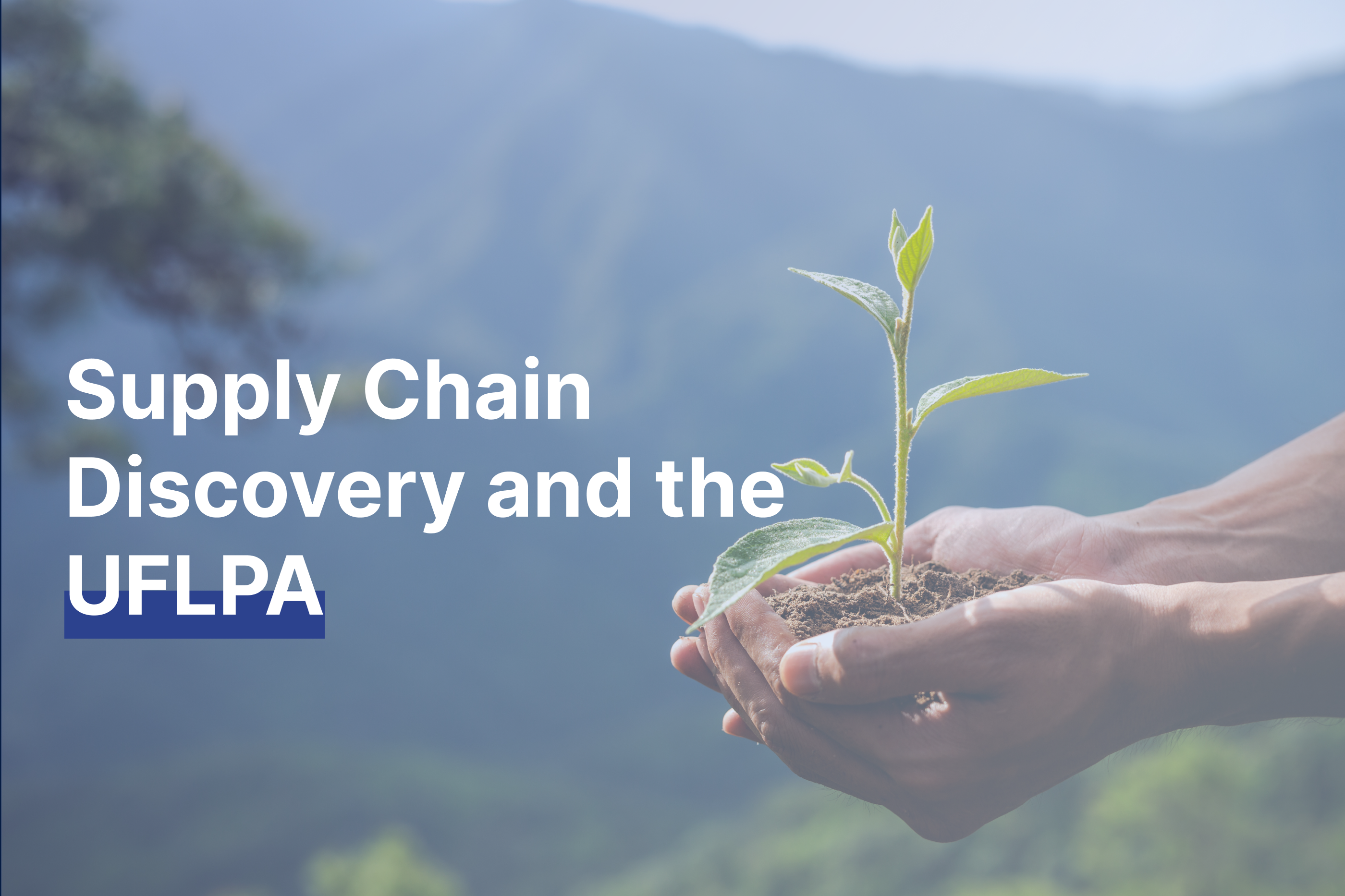The Uyghur Forced Labor Prevention Act (UFLPA) was recently enacted in the United States. What does it mean for the companies and how does it change their daily operations?
Forced labor in the United States is a core enforcement priority of the United States Customs and Border Protection (U.S. CBP) with particular emphasis on the Uyghur Forced Labor Prevention Act, also known as UFLPA. UFLPA targets forced labor in Xinjiang autonomous region in China.
The UFLPA was enacted on December 23, 2021, with a June 21, 2022, effective date for a rebuttable presumption that goods made in whole or in part in Xinjiang region or produced by an entity that is on the UFLPA entity list are prohibited from importation in the United States. These goods are presumed to be made with forced labor.
In the beginning of enforcement, the U.S. CBP has focused on those commodities for which forced labor has already been identified. This included commodities such as food (tomatoes), cotton, and polysilicon. As the U.S. CBP expands enforcement program resources, which it has publicly stated, importing companies will need to anticipate growing and changing diversified priorities. The State Department has identified a million industries that could be subject to forced labor in Xinjiang. This includes not only the previously identified goods, but also construction materials, chemicals, solar energy equipment, electronics, cleaning supplies, and pharmaceuticals. This is just a range of goods that could become a priority for enforcement. It applies very broadly to all goods imported into the United States. For example, it still applies even if you have a small shipment, temporary importation, and there is no threshold exemption. Customs and border protection has brought authorities to detain, exclude or seize and forfeit merchandise under this statute.
How to deal with the detention under UFLPA?
Regarding the release of the goods there are various possibilities to avoid the detention under the enforcement of UFLPA.
The first of these concerns the applicability. What the importers need to demonstrate with that path is that UFLPA does not apply. The primary way to demonstrate this is to have a good mechanism in place – Supply Chain Traceability.
Another solution, much higher standard is to rebut the presumption. The importers must, among other requirements UFLPA, respond to all Customs and Border Protection requests about merchandise and demonstrate by clear and convincing evidence that the good, product was not mined, produced wholly or in part by one of the entities from UFLPA entity list and there was no labor force in the supply chain.
3 Keys to rebut the presumption
The U.S. Customs and Border Protection and Department of Homeland Security released an enforcement strategy and operational guidance for importers, explaining very clearly how to overcome the presumption. The guidance covers three main topics, what we call, the keys to rebut the presumption: due diligence, effective supply chain tracing and supply chain management.
- Due Diligence
By developing due diligence system, the importers must include the following elements:
- stakeholders and partners engagement,
- assessing risks of force labor in the supply chains and remediating when it appears,
- integrate code of conduct in place clearly indicating that forced labor is not permitted,
- conduct training about any forced labor signs, monitoring, and reporting.
- Supply Chain Tracing
This is about “mapping” the entire supply chain, up to and including suppliers of raw materials used in the production. Mapping of all suppliers to be able to show all parties involved in actual production operations. One of the key challenges here is being able to segregate the identity over the raw material all the way through a production process.
- Supply Chain Management
This requires having a system in place with access to worker information:
- contracts containing evidence of the residences of the workers,
- how many hours the workers are required to work,
- what are the living and working conditions of workers,
- is there an absence of surveillance or detention (the freedom of movement).
Then finally, are there independent report to demonstrate these supply chains are free from forced labor.
PDNA software builds supply chains for transparent business
PDNA provides a product traceability toolkit that allows you to map your supply chain and document it as required for regulation.
- Guides you to achieve regulatory compliance with due diligence by contacting your contractors and suppliers.
- Simplifies the collection of relevant data internally and along the whole supply chain.
- Helps you to receive information from your suppliers with business-critical information about your supply chain.
- Assist with data collection. Our automated smart platform facilitates data exchange with suppliers and ensures that necessary and accurate information from the supply chain arrives with minimal effort.
Companies that build robust traceability will be able to meet their transparency targets, stakeholder demands and new regulatory requirements.
